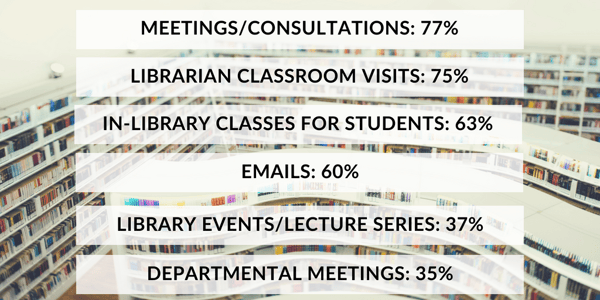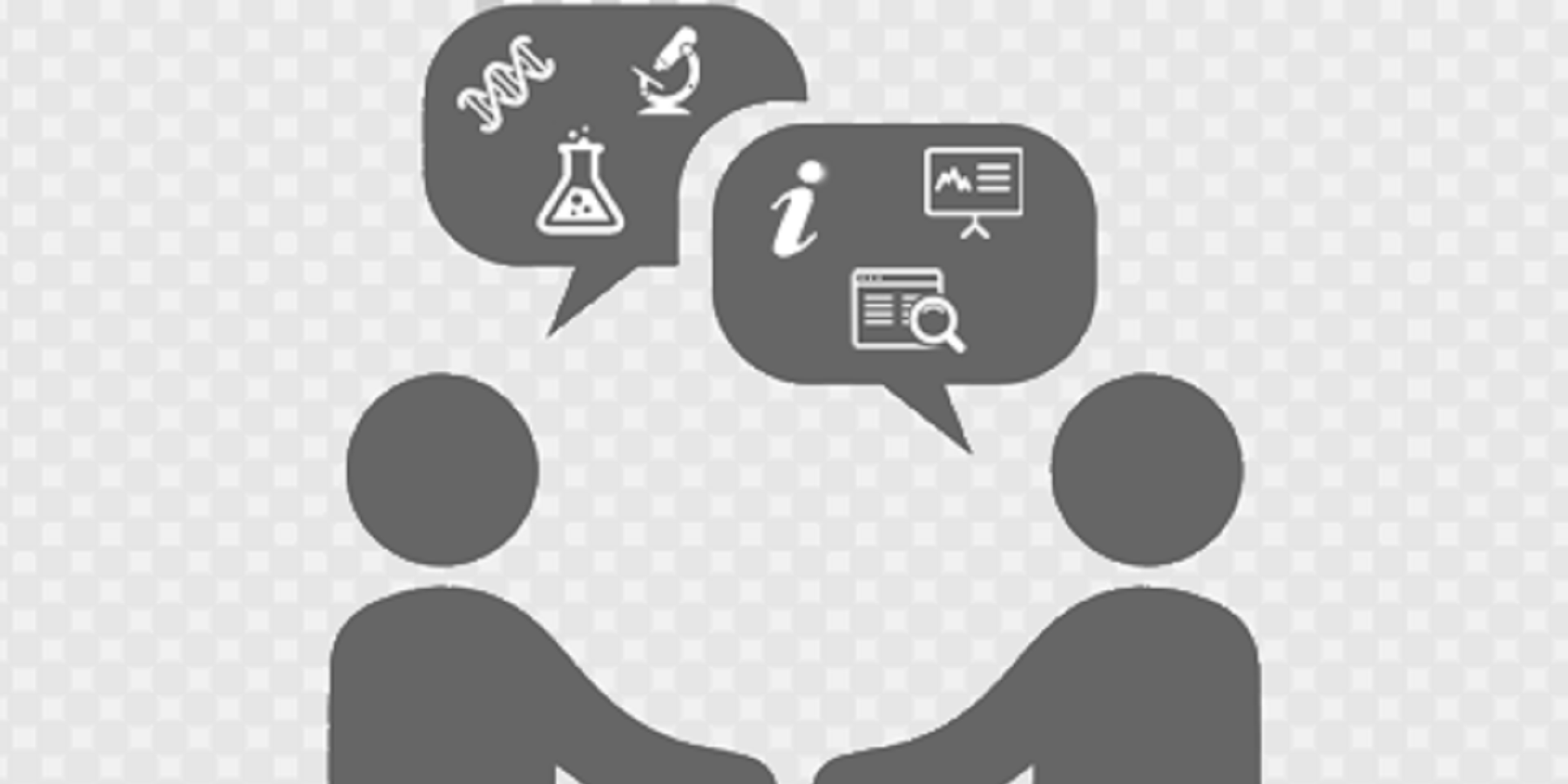In our previous blog, we discussed the gaps between librarians and their scientific audiences.
Now we’ll look at ways STEM librarians are successfully bridging those gaps. Librarians compensate via various types of personal meetings and similar touchpoints, as our recent librarian survey demonstrates. The methods rated “most successful” in our questionnaire of 223 respondents ranked as follows:

It appears the more personal and focused the interaction the better, judging by the ranking of meetings and consultations at the top. However, a couple of practicing STEM librarians had mixed opinions on the survey results, overall.
Tracy Englert, associate professor and science, nursing, and health librarian at the University of Southern Mississippi, was surprised library events didn’t rate higher than a 37 percent success rate. “I’ve had lots of success with my library science café events and making strong connections with faculty,” she writes via email. But she adds: “Of course, the faculty or the graduate students were the ones presenting the café!”
Englert also notes she’s seen success by attending department meetings, where she meets new faculty, eager to “connect with resources.” However, she says it can be difficult to get permission to attend faculty meetings.
Meet Faculty Via Students
Another librarian suggests a more indirect technique, not cited by the survey: Connecting with teachers by interacting with their students. “I've had meaningful experiences with faculty as a result of my outreach to their grad students,” says Carolyn Bishoff, physics, astronomy, and earth sciences librarian at the University of Minnesota, via email.
These students then act as ambassadors to their teachers — convincing them to try a citation manager, adopt an e-book for a course, or learn a different way to search the literature. “I actually don't do outreach directly to faculty anymore — they know I exist and that's usually enough — except to update them yearly on collections, course support, and grad student support.”
Email: Mixed Bag
Like everyone else, librarians are also using email and social media platforms, such as Twitter and LinkedIn, to communicate. Leveraging these tools is a great strategy in the current age. We’ll leave social media for its own blog — but when it came to email (which scored fourth in the interaction success ranking), both Englert and Bishoff had reservations when it comes to faculty interaction.
Bishoff notes that her email success hovers between 20-30 percent of the time — although when the emails cite a “specific request or a project” the emails tend to do better. “I'm really sensitive to bombarding faculty with information over email.”
Englert agrees: “I’ve even personally observed faculty saying that they are overwhelmed with email and sometimes just delete them. They are drowning in email.”
Be Creative/Persistent In Outreach
Some of the other interaction methods librarians suggested were:
- Volunteer to judge an on-campus science fair
- Work with a faculty member who will offer students extra credit for attending library training
- Attend faculty retreats
- Participation in campus events (where you can meet relevant faculty)
- Inviting faculty to speak at librarian meetings
- Faculty training outreach
Ultimately, every situation will vary at least somewhat, and librarians must experiment and keep attempting to communicate. As Englert says: “You have to try different things. Plus, it may take years of trying before you succeed in ‘getting in’ and working with a particular class or lab. Keep trying and be persistent! It took me three years of trying before I finally was able to host office hours at our biology tutoring center.”

